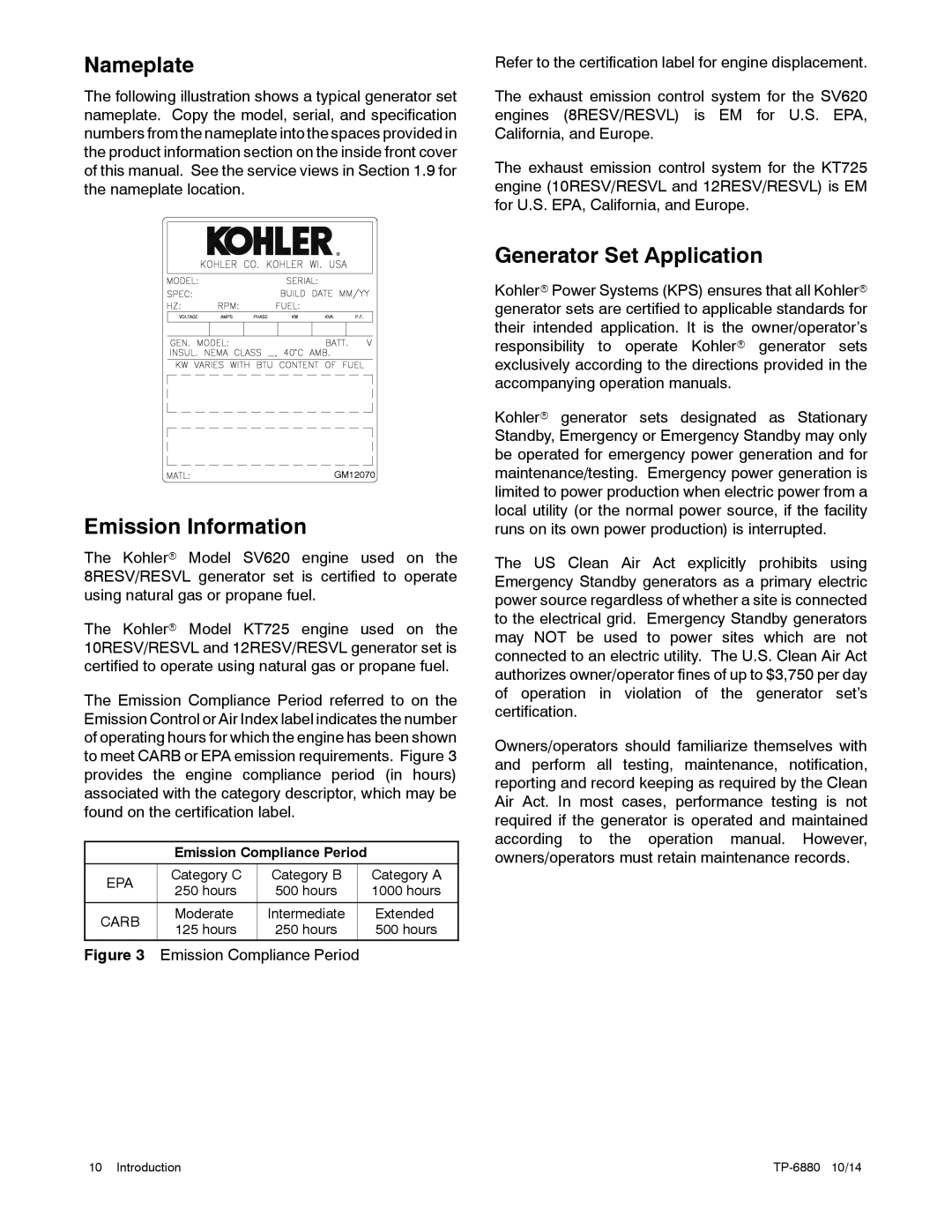
Nameplate
The following illustration shows a typical generator set nameplate. Copy the model, serial, and specification numbers from the nameplate into the spaces provided in the product information section on the inside front cover of this manual. See the service views in Section 1.9 for the nameplate location.
Refer to the certification label for engine displacement.
The exhaust emission control system for the SV620 engines (8RESV/RESVL) is EM for U.S. EPA, California, and Europe.
The exhaust emission control system for the KT725 engine (10RESV/RESVL and 12RESV/RESVL) is EM for U.S. EPA, California, and Europe.
GM12070
Emission Information
The Kohlerr Model SV620 engine used on the 8RESV/RESVL generator set is certified to operate using natural gas or propane fuel.
The Kohlerr Model KT725 engine used on the 10RESV/RESVL and 12RESV/RESVL generator set is certified to operate using natural gas or propane fuel.
The Emission Compliance Period referred to on the Emission Control or Air Index label indicates the number of operating hours for which the engine has been shown to meet CARB or EPA emission requirements. Figure 3 provides the engine compliance period (in hours) associated with the category descriptor, which may be found on the certification label.
Emission Compliance Period
EPA | Category C | Category B | Category A | |
250 hours | 500 hours | 1000 hours | ||
| ||||
|
|
|
| |
CARB | Moderate | Intermediate | Extended | |
125 hours | 250 hours | 500 hours | ||
|
Figure 3 Emission Compliance Period
Generator Set Application
Kohlerr Power Systems (KPS) ensures that all Kohlerr generator sets are certified to applicable standards for their intended application. It is the owner/operator’s responsibility to operate Kohlerr generator sets exclusively according to the directions provided in the accompanying operation manuals.
Kohlerr generator sets designated as Stationary Standby, Emergency or Emergency Standby may only be operated for emergency power generation and for maintenance/testing. Emergency power generation is limited to power production when electric power from a local utility (or the normal power source, if the facility runs on its own power production) is interrupted.
The US Clean Air Act explicitly prohibits using Emergency Standby generators as a primary electric power source regardless of whether a site is connected to the electrical grid. Emergency Standby generators may NOT be used to power sites which are not connected to an electric utility. The U.S. Clean Air Act authorizes owner/operator fines of up to $3,750 per day of operation in violation of the generator set’s certification.
Owners/operators should familiarize themselves with and perform all testing, maintenance, notification, reporting and record keeping as required by the Clean Air Act. In most cases, performance testing is not required if the generator is operated and maintained according to the operation manual. However, owners/operators must retain maintenance records.
10 Introduction |
